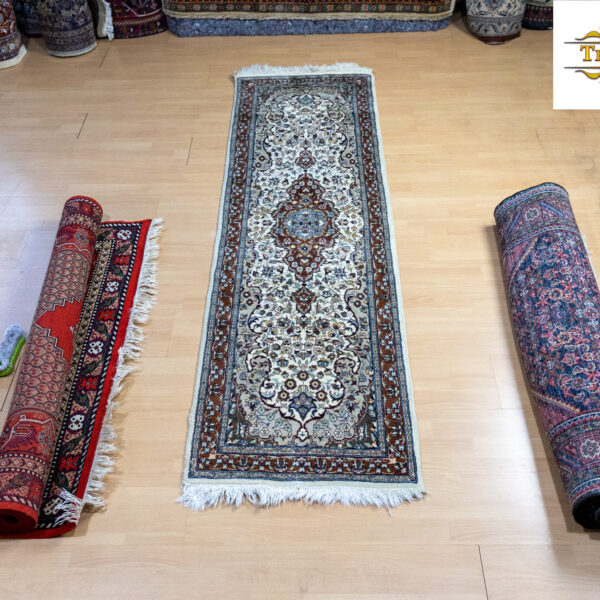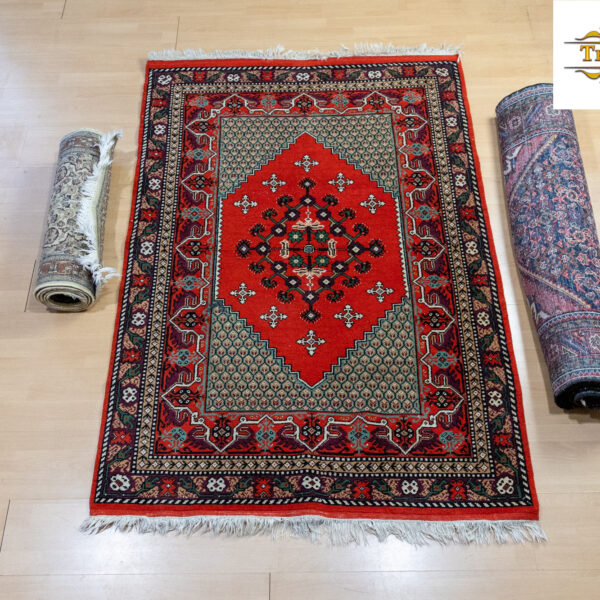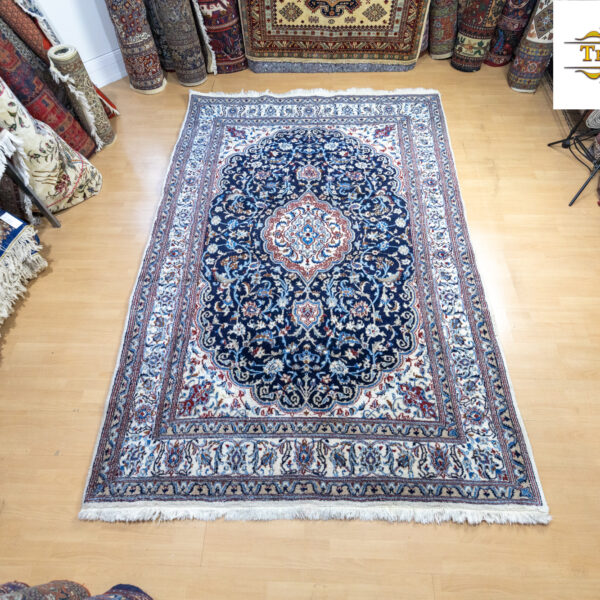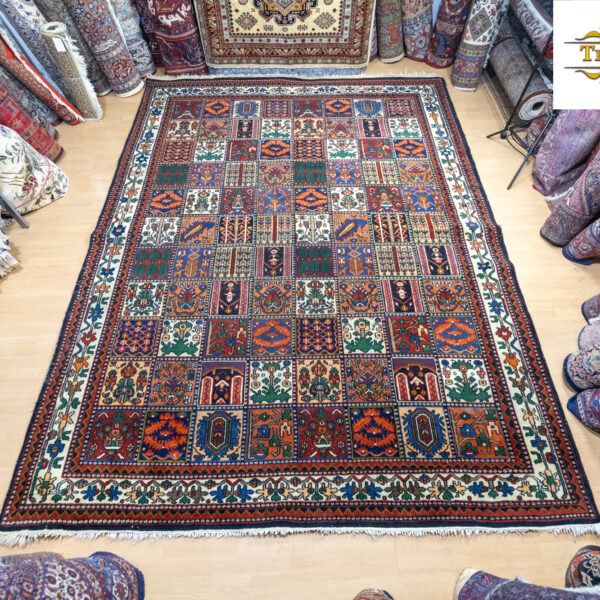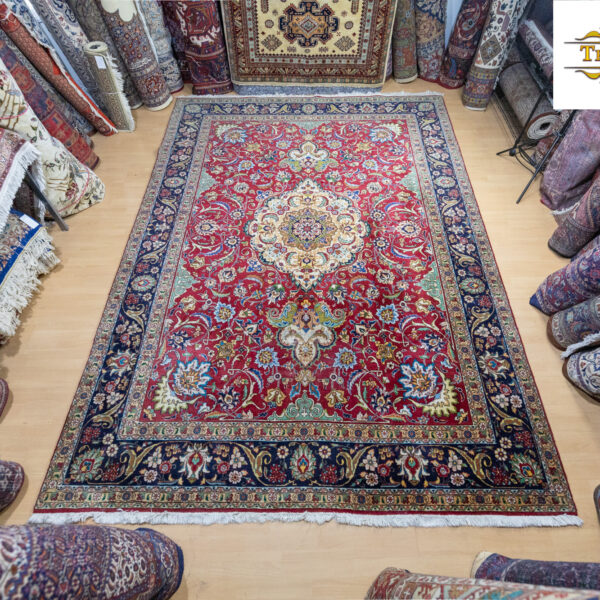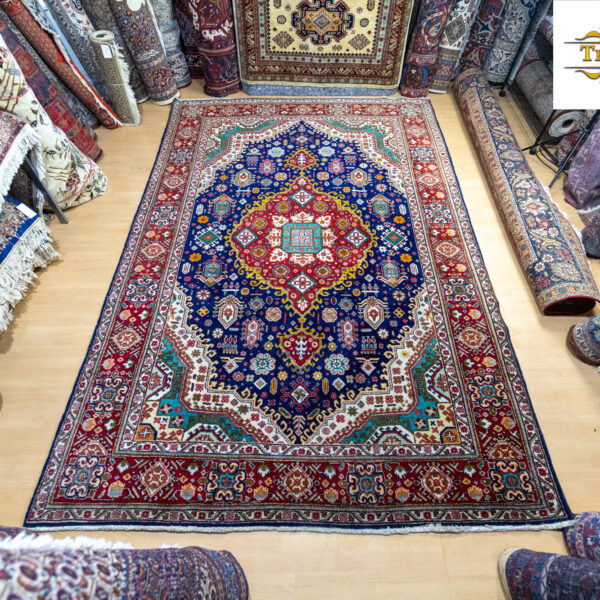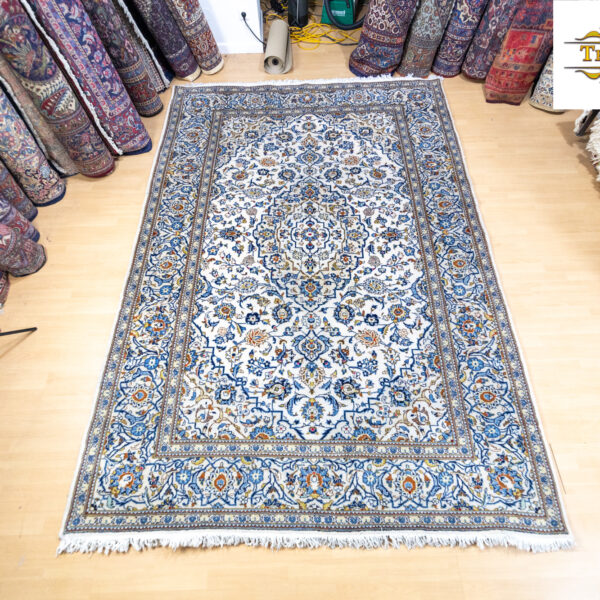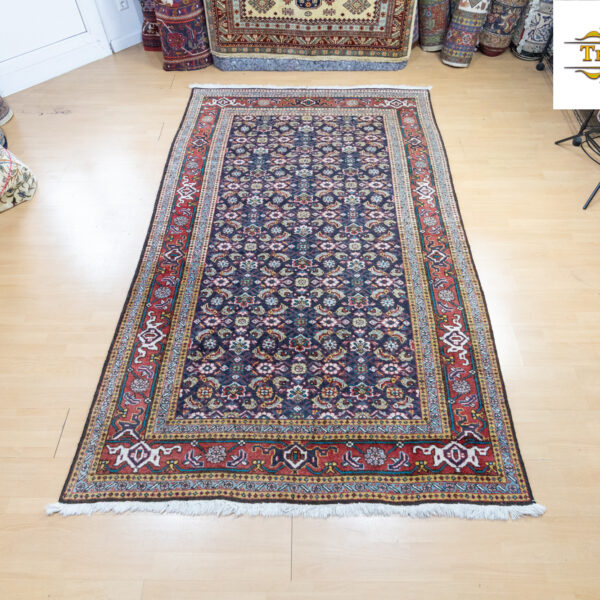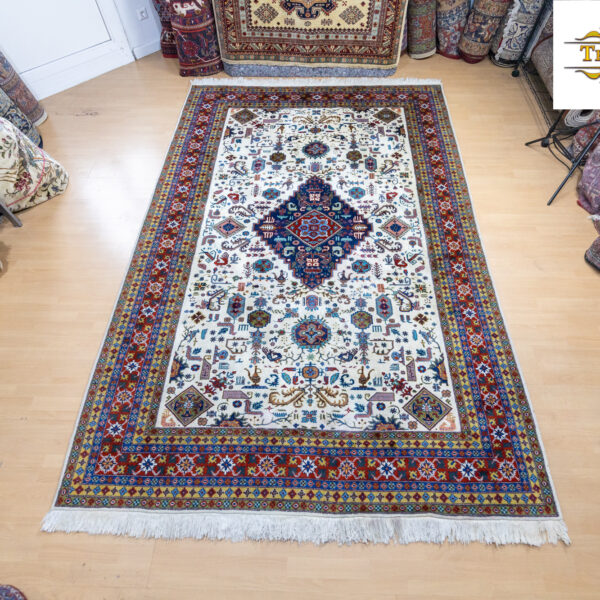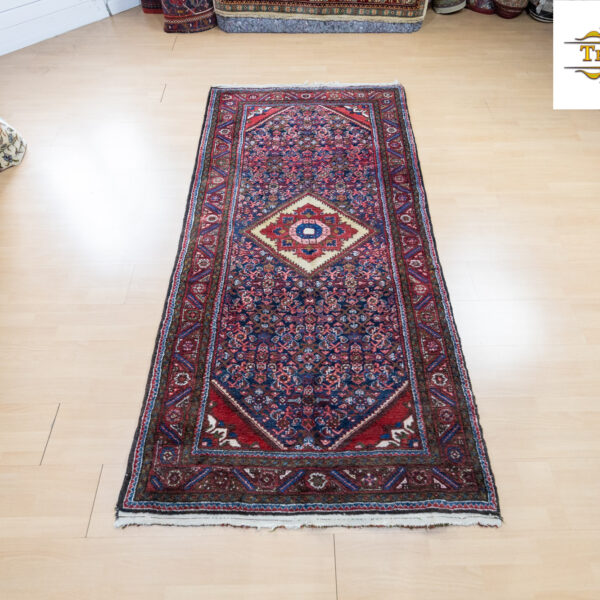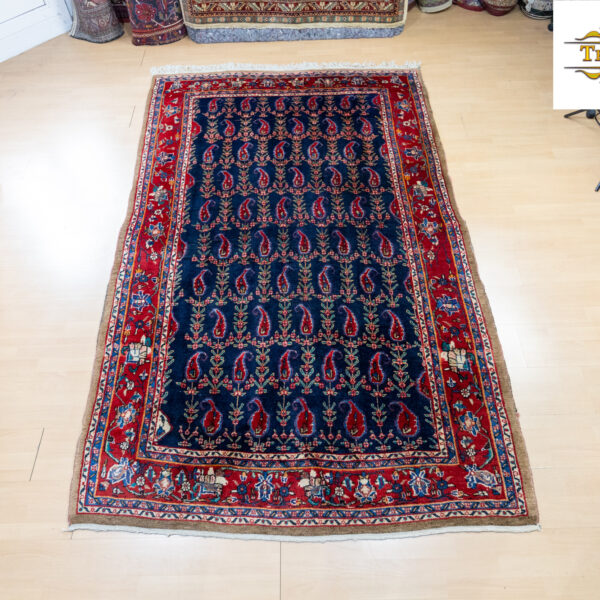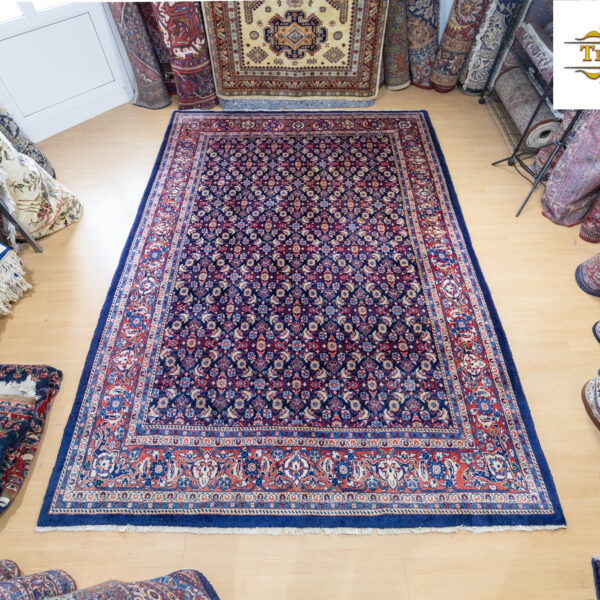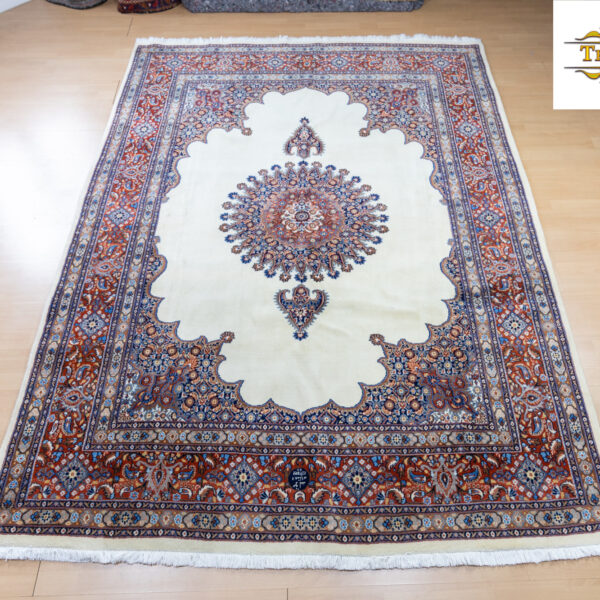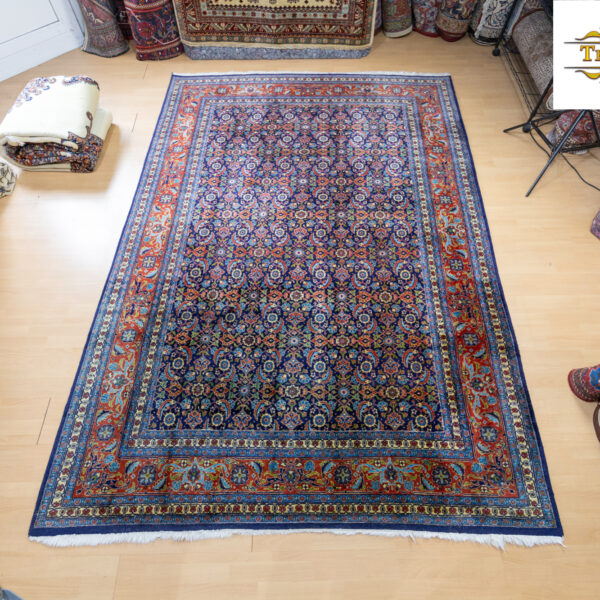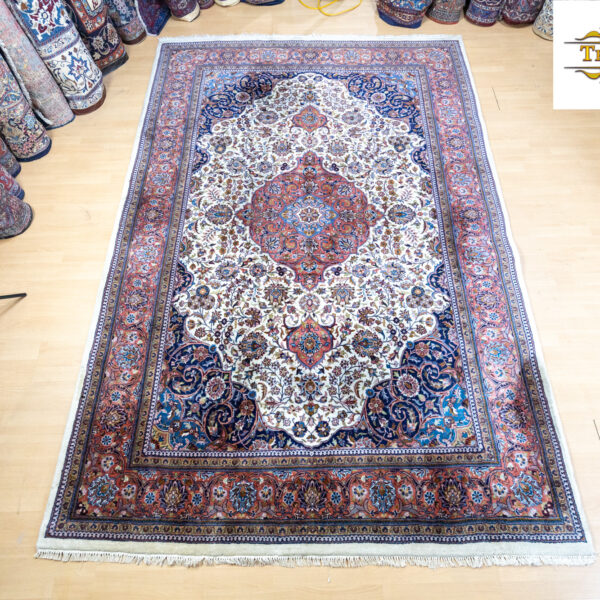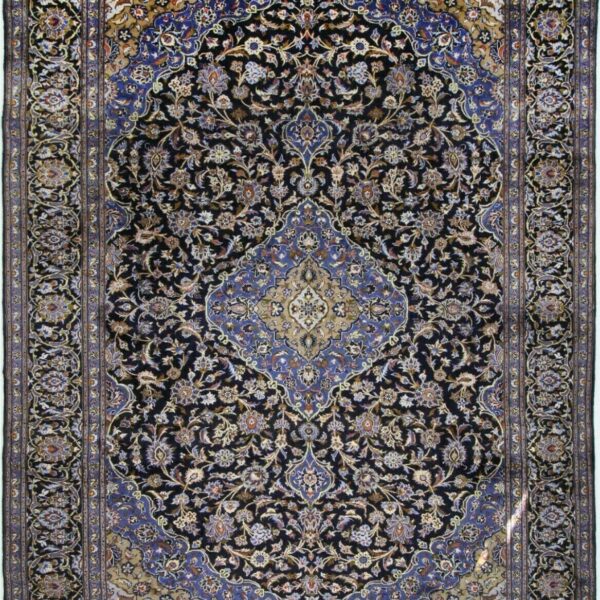Persian carpets
A Persian carpet (Persian: فرش ایرانی, romanized: farš-e irâni [ˈfærʃe ʔfarˈsi]) or a Persian carpet (Persian: قالی ایرانی, romanized: qâli-ye irâni [ɢɒːˈliːje ʔfarːje ʔ]farˈ[siani] carpet), also known as ʔfarˈ , is a heavy fabric made for very different uses and symbolic purposes, produced in Iran (known historically as Persia) for domestic use, local sale and export. Carpet weaving is an integral part of Persian culture and art. In the group of oriental carpets produced by the "carpet" countries, the Persian carpet stands out for the variety and elaboration of its numerous designs.
Persian carpets of various kinds were woven in parallel by nomadic tribes in the workshops of the villages and towns and by the manufacturers at the royal court. As such, they represent different strands of tradition running concurrently, reflecting the history of Iran, Persian culture and its diverse peoples. Carpets woven in the factories of the Safavid court in Isfahan in the XNUMXth century are famous for their intricate colors and artistic design and are kept in museums and private collections around the world. Their patterns and designs established an artistic tradition for the craftsmen at court that was maintained throughout the duration of the Persian Empire up to the last royal dynasty of Iran.
Woven in cities and regional centers such as Tabriz, Kerman, Ravar, Neyshabour, Mashhad, Kashan, Isfahan, Nain and Qom, the carpets are characterized by specific weaving techniques and the use of high-quality materials, colors and patterns. Manufacturers in the city, similar to those in Tabriz, played an important historical role in reviving the tradition of carpet weaving after periods of decline. Woven by villages and tribes in Iran, rugs are characterized by their fine wool, rich, intricate colors and specific, traditional patterns. Nomadic weavers and small villages often produce rugs with more daring and sometimes crude designs, which are considered the most authentic and traditional rugs of Persia, in contrast to the elaborate and ready-made designs of the large workshops. The Gabbeh carpets are the most well-known carpet type in this traditional line.
Due to political unrest or commercial pressure, carpet weaving has experienced periods of decline over the decades. In particular, it suffered from the introduction of synthetic dyes in the second half of the 19th century. Carpet weaving still plays a key role in the economy of modern Iran today. Modern production is characterized by the revival of traditional dyeing with natural dyes, the reintroduction of traditional tribal patterns, but also the invention of modern and innovative patterns, woven with the centuries-old technique. Hand-woven Persian rugs and carpets have been considered objects of great artistic value, utility value and prestige since they were first mentioned by authors of ancient Greece.
- You cannot add “Sold W1(#213) approx. 350x240cm Hand-knotted Nain Persian Rug with Silk 9la” to your shopping cart because the product is currently out of stock.

